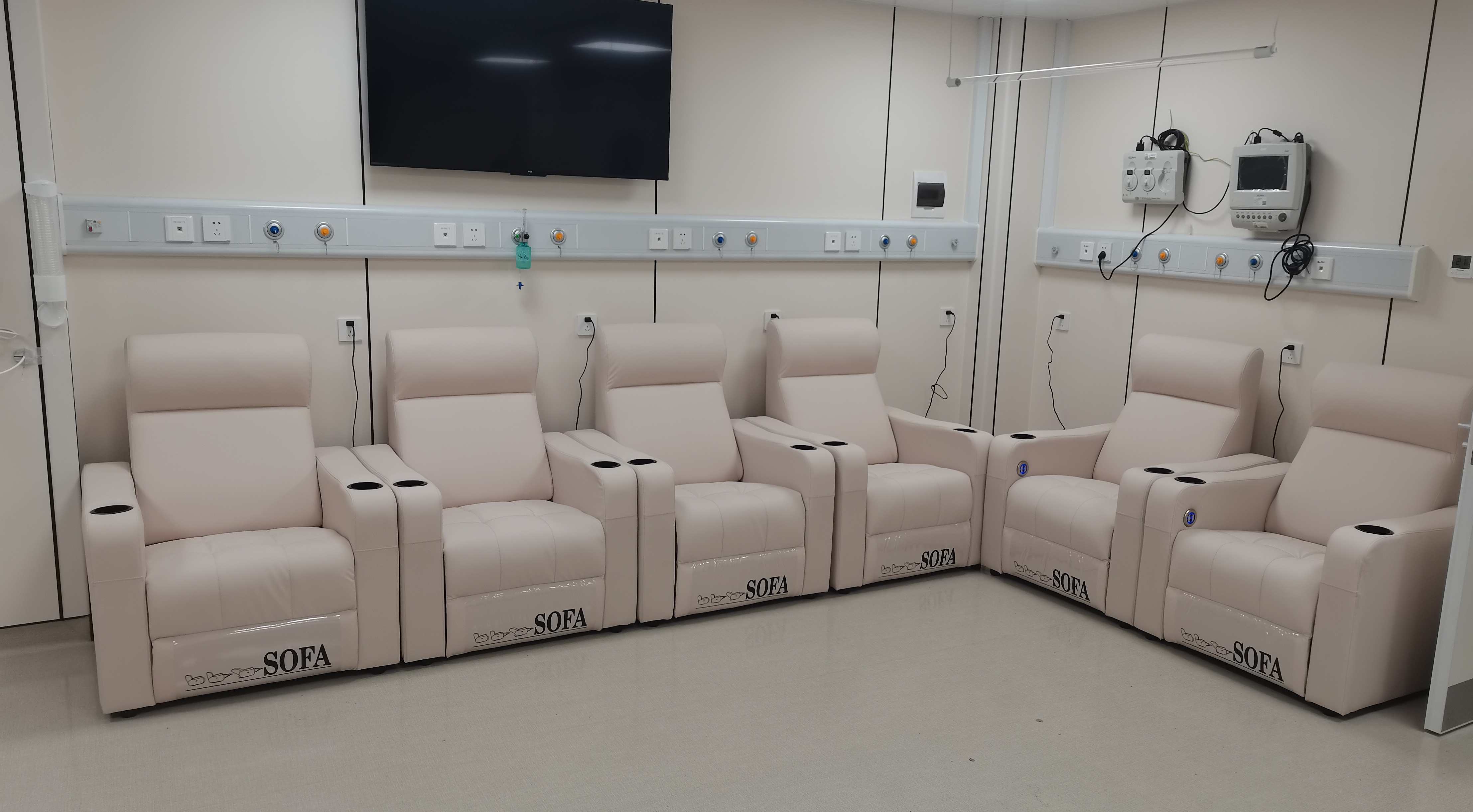In the daily operation of the hospital, the infusion area is an important place with high frequency of use and dense personnel. One of the "must-have equipment" that supports the smooth operation of this area is the infusion chair. Don't underestimate this chair. It is not only related to the patient's infusion experience, but also affects the hospital's operating efficiency and space utilization. So the question is: Is the infusion chair you choose really suitable?
1. Comfort: Sitting for a long time without getting tired is the hard truth
Infusion usually takes 1-4 hours. If the chair design is unreasonable, the patient is prone to back pain and even affects blood circulation. A high-quality infusion chair should have:
Adjustable backrest (100°-160° tilt) to adapt to different body shapes;
Thickened cushion (high-density sponge or memory foam) to disperse hip pressure;
Armrest support to avoid fatigue caused by hanging arms in the air.
2. Easy to clean: antibacterial materials reduce the risk of infection
The hospital environment has extremely high requirements for hygiene, and the infusion chair must be easy to disinfect:
Waterproof PU leather or antibacterial mesh (resistant to alcohol and 84 disinfectant);
Seamless design (avoid stain residue);
Removable cushion cover (easy to deep clean).

3. Functionality: Infusion stand and storage board are indispensable
Adjustable infusion stand (height suitable for patients of different heights);
Folding storage board (convenient for placing water cups, mobile phones, etc.);
Hidden charging port (meet the needs of modern patients).
4. Durability: Choose the right material and double the lifespan
Frame: 304 stainless steel or reinforced aluminum alloy is preferred, rust-proof and strong load-bearing (≥150kg);
Pulley (if with mobile function): Silent universal wheel, smooth push and pull without damaging the floor;
Joint parts: Hydraulic rod/gear structure needs to pass 100,000 opening and closing tests.
Purchasing advice: Choose a brand with a warranty of more than 5 years, which is more cost-effective for long-term use.